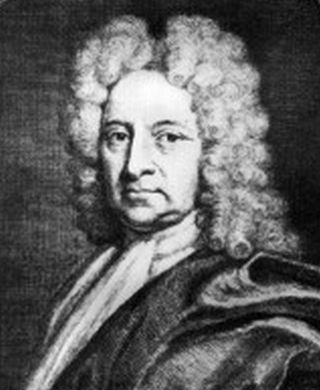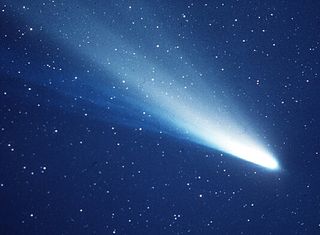Edmond Halley: An Extraordinary Scientist and the Second Astronomer Royal
Edmond (or Edmund) Halley was an English scientist best known for predicting the orbit of the comet that was later named after him. Though he is remembered foremost as an astronomer, he also made significant discoveries in the fields of geophysics, mathematics, meteorology and physics.
Young scholar
Halley (the traditional pronunciation of the name rhymes with valley) was born Nov. 8, 1656, in Haggerston, Shoreditch, London, England. His father was a prosperous soapmaker and property owner, according to an online biography from the University of St. Andrews in Scotland. Halley was tutored privately at home before entering St. Paul's School, where he excelled in mathematics and astronomy.
Halley entered Queen's College, Oxford, in 1673, when he was 17 years old. He brought with him a fine collection of astronomical instruments purchased by his father. While still an undergrad, he became a protégée of John Flamsteed, the Astronomer Royal. Halley made important observations at Oxford, including an occultation of Mars by the moon, and published papers on the solar system and on sunspots.
The young astronomer gave up his studies in 1676 and sailed to St. Helena in the South Atlantic where he catalogued 341 stars in the Southern Hemisphere and discovered a star cluster in Centaurus. He also made the first observation of a transit of Mercury and realized that a similar transit of Venus could be used to measure the size of the solar system. During the voyage, he also improved the sextant, and documented observations about the ocean and the atmosphere.

Reputation made
Halley published his star catalog in 1678, which established his reputation as an astronomer. King Charles II decreed that Oxford grant Halley a Master of Arts degree. Halley was also elected a fellow of the Royal Society. At the age of 22, he was among the youngest members of the prestigious scientific group.
For the next few years, Halley traveled and continued making scientific observations. He observed a comet in Paris in 1680 and worked with Giovanni Cassini to determine its orbit. In 1684, Halley, with fellow Royal Society members Christopher Wren and Robert Hooke, visited Isaac Newton to discuss theories of planetary motion. Newton showed them his calculations. Halley persuaded Newton to expand his studies and allow him to edit the work. Halley paid all the expenses, corrected the proofs himself, and brought "Philosophiae Naturalis Principia Mathematica" ("Mathematical Principles of Natural Philosophy," often referred to as the "Principia") to print in 1687.
Halley worked for the Royal Society in a number of endeavors. He edited the Society's journal, "Philosophical Transactions," published some of the world's first actuarial tables, and published a map of the world that showed the prevailing winds over the oceans — in other words, the first meteorological chart.
In 1698, he commanded a British naval ship on a scientific expedition. On two voyages, Halley took compass measurements in the South Atlantic and determined accurate longitudes and latitudes of his ports of call. He also studied the variation between Magnetic North and True North. After the second voyage, he published a map showing isoclines, or points of equal value of deviation.

Immortality achieved
In 1704, Halley was appointed the Savilian professor of geometry at Oxford. Continuing his work in observational astronomy, Halley published "A Synopsis of the Astronomy of Comets" in 1705. In this work, he showed that comet sightings of 1456, 1531, 1607 and 1682 were so similar that they must have been the same comet returning. He predicted that it would return in 1758. [Photos: Halley's Comet Through History]
In 1716, Halley devised a method for observing transits of Venus across the disk of the sun in order to determine the distance of Earth from the sun. He also proposed two types of diving bells for exploring underwater. In 1718, by comparing star positions with data recorded by the Greek philosopher Ptolemy, he deduced the motion of stars.
In 1720, Halley succeeded Flamsteed as Astronomer Royal. He continued to make observations, such as timing the transits of the moon across the meridian, which he hoped would eventually be useful in determining longitude at sea.
Halley died Jan. 14, 1742, in Greenwich, England. He did not survive to see the return of what later was named Halley's Comet, on Christmas Day in 1758.
This article was updated on Dec. 11, 2018 by Space.com Contributor Adam Mann.
Join our Space Forums to keep talking space on the latest missions, night sky and more! And if you have a news tip, correction or comment, let us know at: community@space.com.
Get the Space.com Newsletter
Breaking space news, the latest updates on rocket launches, skywatching events and more!
